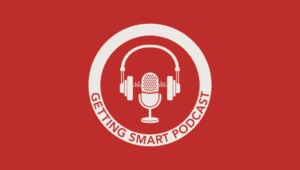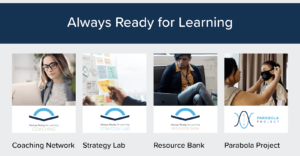Superintendents Aim to Redefine Readiness

One of the unintended consequences of the standards movement was to narrow student progress to a test score, and there’s growing evidence that a single test score is a poor measure of readiness for college, careers and life.
The subject of readiness has never been more important; the new economy requires all postsecondary learning for family wage employment. Dr. David Schuler wants students and their families to know that postsecondary education is a viable option. As superintendent of Township High School District 214 northwest of Chicago, Schuler’s team conducted research into readiness.
Redefining Ready! is a national campaign launched by the superintendents association to introduce new research-based metrics to more fully communicate readiness for college, careers and life. Following is a recap of what the superintendents and others have learned about readiness.
College Ready
Students are college ready if they complete required coursework with at least a 2.8 GPA and pass a college readiness placement exam. Completing college level coursework (AP, IB or dual enrollment) is another great indicator of readiness. ACT scores of at least 18 in English and 22 in Math. Other factors that contribute to college success including enrollment in career pathway courses, senior year math class and completion of a math class after Algebra II.
Colleges increasingly appreciate broader indicators of readiness including a portfolio of artifacts, evidence of service and leadership.
Advisor Alex Ellison said the most important college readiness factor is the individual pursuit of a passion. “Students who create, build, invent and lead SOMETHING in high school are those who not only stand out in the college application process, but they are also those who are more sure of themselves and more confident about their abilities. These are the students who will thrive in college, regardless of where they are.”
Without the persistence that Ellison describes as a key element of readiness, students run the risk of the new worst case scenario: racking up debt and not finishing a degree.
Career Ready
Students are career ready if they have identified and explored a career interest. Other ways to demonstrate career readiness include an industry credential and dual credit career pathways.
District 214 Career Pathways Booklet aligns school, work and extracurricular opportunities to 16 nationally recognized career clusters. The guide is used by D214 students as a roadmap to preparing for postsecondary goals.
Mickey Revenaugh, co-founder of Connections Education, said we should be “Remixing ‘college readiness’ and ‘career readiness’ to give every one of our students real options for success after high school.”
Life Ready
Being life ready means “students leave high school with the grit and perseverance to tackle and achieve their goals.” Life ready youth possess a growth mindset and the “ability to apply creative know how in new situations” which is “at least as important as historical and technical knowledge.”
Good habits, as noted in December, are at least as important as basic skills when it comes to success in college and work. The ability to apply creative know-how in new situations is at least as important as historical and technical knowledge.
In his new book, Personalizing 21st Century Learning, Dan Domenech describes how personalized and project-based learning develops college readiness and life readiness (watch him discuss it here).
“It’s time,” said Mickey Revenaugh, “to expand ‘our vision of school,’ to imagine personalized learning pathways that rebundle the best of the community and the classroom.”
Listen to Dan Domenech discuss #RedefiningReady in this podcast.
Lend Your Support
- Use #RedefiningReady on social media to add your voice to the conversation. Download and modify a sample Board of Education Resolution:
- Email [email protected] to add your organization’s name to our list of supporters.
- Download and share the Redefining Ready! summary.
For more see
- What Does College and Career Readiness Mean Now in the Shift to Digital Learning?
- Why Guidance Matters for College and Career Readiness
- Personalizing Post High School Readiness
- Personalizing 21st Century Education: A Framework for Student Success (book review)
Stay in-the-know with all things EdTech and innovations in learning by signing up to receive the weekly Smart Update.








0 Comments
Leave a Comment
Your email address will not be published. All fields are required.